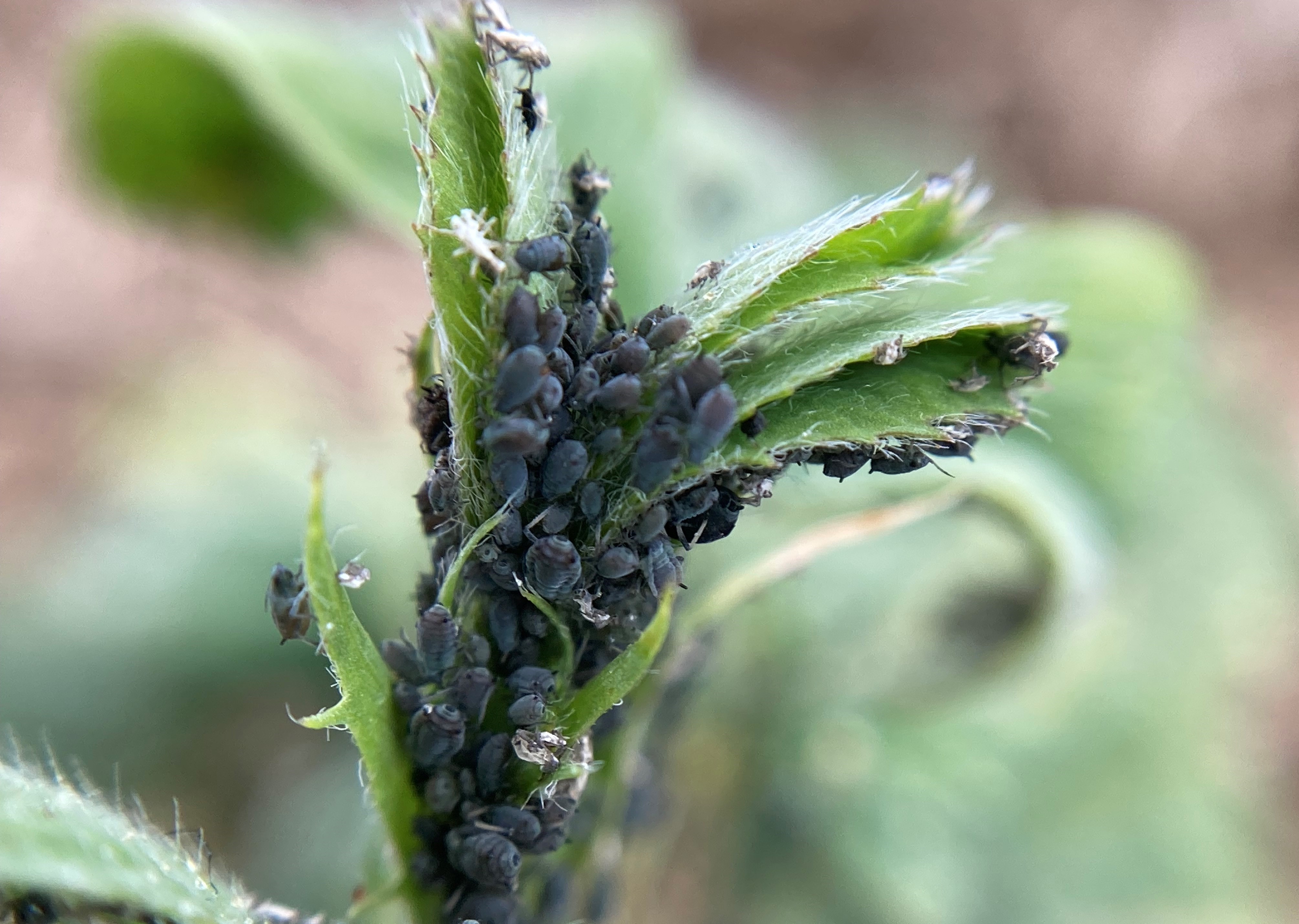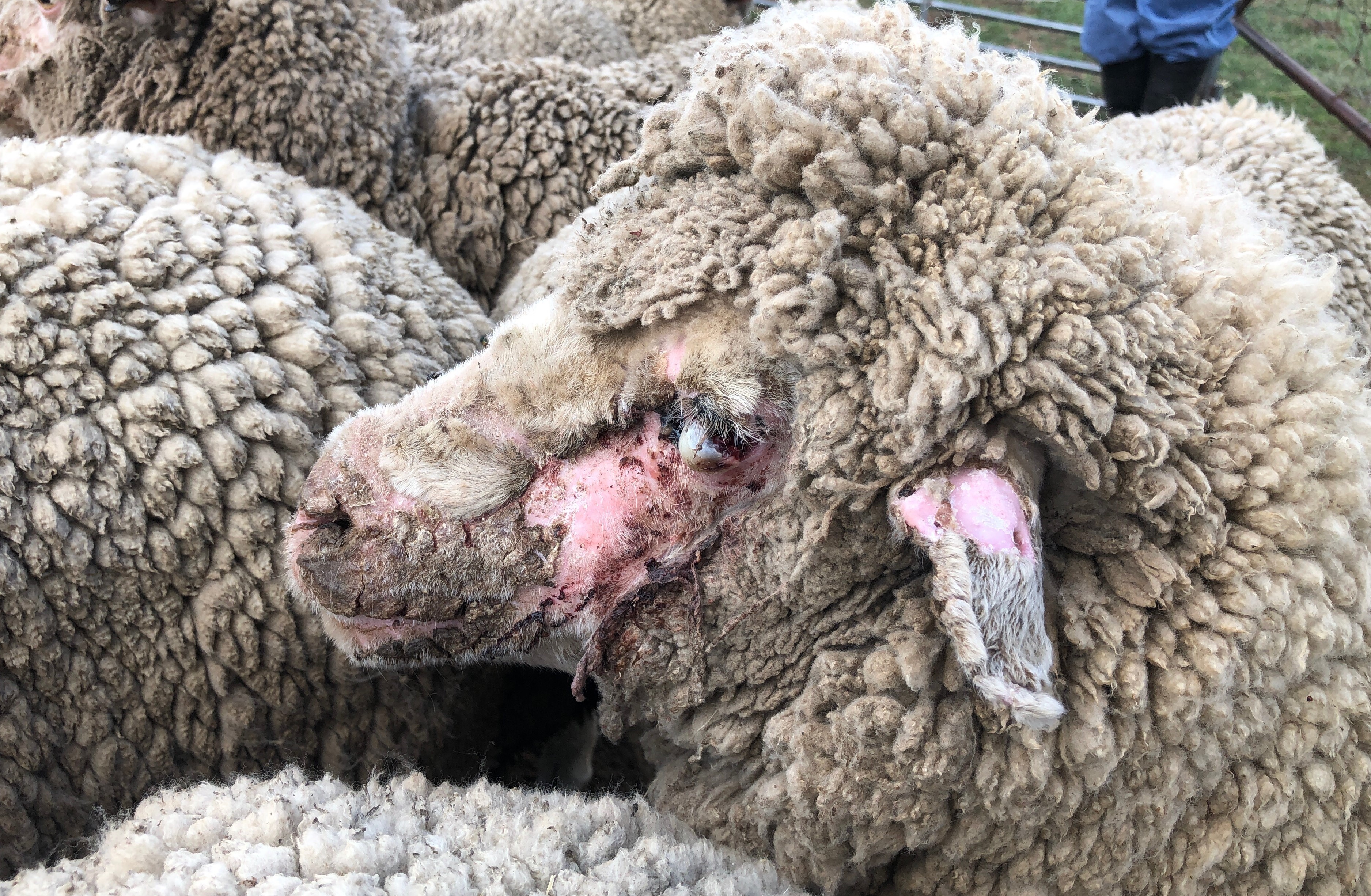Photosensitisation
Photosensitisation in stock is a condition in which skin is damaged when photodynamic agents found in the diet react to sunlight. It can cause severe skin legions resulting in production losses, or liver damage which may result in death.
What is photosensitisation?
Photosensitisation is a disease affecting cattle, sheep and goats whereby the consumption of toxic plants causes an overload of photodynamic agents which react with sunlight to cause skin damage.
There are two forms of photosensitisation, primary and secondary, which are categorised based on how the disease develops.
Primary photosensitisation is caused by the ingestion of toxic plants containing light-sensitive agents which react to sunlight. In Australia, the most common of these is called phylloerythrin. When livestock ingest these toxic plants, the phylloerythrin is absorbed into the bloodstream and when exposed to sunlight, these pigments can fluoresce, resulting in skin damage.
In these cases of primary photosensitisation, production losses can be significant, however the liver is not damaged and mortality of stock is less likely to occur.
Plants containing toxins that cause primary photosensitisation include:
- St John’s wort
- buckwheat
- immature brassica crops including rapes, kales, and canola.

It is strongly believed that cowpea aphids (Aphis craccivora) contain a photodynamic fluorescent pigment that causes photosensitisation in stock after they directly consume the aphids whilst grazing on the pasture. Cowpea aphids are reported pests of not only cowpeas but also vetch crops, faba beans, chickpeas and lupins.
Read more about cowpea aphids.
Secondary photosensitisation occurs when there is liver disease which stops the normal metabolism of photodynamic agents by the liver. The levels of photodynamic agents then build up in the bloodstream. If an overload of these agents occurs, skin exposed to sunlight becomes severely damaged.
The initial cause of liver damage may be through the consumption of certain toxic plants or from other factors. If the liver damage in livestock is severe, there are often mortalities.
Plants containing toxins that cause secondary photosensitisation include:
- Hairy panic
- Sweet grass
- Caltrop
- Heliotrope
- Paterson’s curse
- Lantana
- Fungus of lupinosis
Clinical signs of photosensitisation
 In cases of primary photosensitisation, signs generally appear within 2-3 days of ingesting the plant. However, in cases of secondary photosensitisation, signs of may not occur until weeks after the animals have been removed from the toxic pasture.
In cases of primary photosensitisation, signs generally appear within 2-3 days of ingesting the plant. However, in cases of secondary photosensitisation, signs of may not occur until weeks after the animals have been removed from the toxic pasture.
Signs of photosensitisation in livestock include red, weepy and swollen skin, which may lead to ear drooping or closed eyelids.
The first signs of photosensitisation are swelling of the ears and/or muzzle, which can then result in blistering and scabs. If excessive swelling is present, animals may have difficulty breathing or grazing. In severe cases, the surface of the skin may crack, turn black and slough of.
In sheep, the face, ears and muzzle are the worst affected areas, however, sheep that have been recently shorn may be affected over the whole body.
Photosensitisation can also cause death. Young livestock, especially lambs, are prone to photosensitisation, whereas animals with dark pigmented skin or a good wool covering are less susceptible.
In cattle, lesions are usually limited to white-coloured areas but skin damage can occur along the back and on the udder. There is intense irritation and pain associated with the skin damage. Affected animals will be agitated and lose their appetite, seek shade and scratch against fixed objects.
The severity of the skin lesions depends on the type and amount of toxic plant ingested, the stage of growth of the plant and the amount of sun exposure. In cases of secondary photosensitisation with liver damage, animals may also become jaundiced in the eyes, skin and gums.
How to treat photosensitisation?
Treatment strategies are directed at removing the toxic plants and protecting livestock from sunlight:
- Remove stock from the paddock where the disease is occurring.
- If possible, put stock in a darkened shed.
- Provide stock with water and cereal hay (or lower quality hay with no green colour).
- Seek veterinary attention for severely affected or valuable animals.
It should be emphasised that livestock with photosensitisation are highly allergic to sunlight and this condition is not sunburn. Affected livestock require complete protection from sunlight for at least a week.
Mild cases of primary photosensitisation should improve in less than a week after being removed from the toxic source. In severe cases or where liver damage is suspected, recovery may be more prolonged.
How to prevent photosensitisation in livestock
Appropriate pasture management and control of toxic plants is important in preventing the onset of photosensitisation. In high-risk periods (spring and summer) regular assessment of stock should be conducted to enable early recognition and treatment of the condition to minimise losses.
If signs of photosensitisation occur while grazing brassicas, remove the stock from the crop and place them in a well-shaded area. Symptoms should reverse over a couple of weeks. To prevent the condition, graze mature crops, introducing the stock gradually. Get more advice on how to introduce stock to crops to minimise health risks.